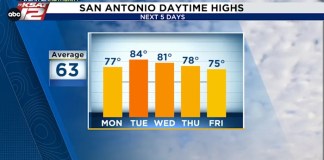Elections over the next several months in Virginia, New Jersey, Pennsylvania and elsewhere are not just bellwethers for the midterms—they’re vital to protecting women’s rights.
Polls and pundits have offered up plenty of predictions, but in a democracy, voting rules. The elections this fall will provide hard data on President Donald Trump and the GOP’s prospects for retaining a majority in the U.S. House, as the country and the world take stock of the national mood leading into next year’s midterms. On the ballot are state
offices in Virginia and New Jersey, U.S. congressional seats, control of the Pennsylvania Supreme Court and more.
In all contests, women’s votes will be key—and not just because women vote more than men.
Celinda Lake, a leading pollster and president of Lake Research Partners, has studied public opinion for decades. She told Ms. that women “are our own voters, we make up our own minds. … Women really want government to be a help for their families. They believe that they could depend on a social safety net program.”
This is one reason why there’s been a marked gender gap in U.S. elections since at least 1980, with women more often favoring Democratic candidates than men—often decisively.
Statewide races offer the best barometers of public sentiment toward the current administration, and we’ll be closely watching the gubernatorial races in New Jersey and Virginia.
New Jersey
With U.S. Rep. Mikie Sherrill as the Democratic nominee, New Jersey could elect its second woman governor.

In the state legislature, all 80 Assembly seats are up for election, and while the state is already solidly blue, further gains for Democrats would be telling. Women currently hold 31 Assembly seats but could increase their representation if Democrats win big: Some 47 percent of Democratic nominees are women, versus 28 percent of Republican nominees.
Virginia
Farther south, Virginia is holding elections for statewide leadership and its House of Delegates, which currently has a razor-thin Democratic edge.

The open-seat, two-woman gubernatorial contest between former Rep. Abigail Spanberger (D-Va.) and Lieutenant Gov. Winsome Earle-Sears (R) means the state will elect its first woman governor.
Women also make up more than 50 percent of Democratic candidates for the legislature; just 20 percent of Republican candidates are women.

Some of the nominees for the Virginia House are explicitly referencing abortion in their campaigns as a push begins for a constitutional guarantee for abortion rights, which would first need approval by the legislature.
Notably, after a favorable election in 2019, Virginia became the 38th state (the final one required) to ratify the Equal Rights Amendment, though ongoing controversy over the ratification time limit in the preamble to the ERA has prevented its recognition in the U.S. Constitution.
California
Meanwhile, at Trump’s request, the Republican-majority legislature in Texas approved a new congressional map in August—an unusual act outside a census year—adding five Republican-majority districts to the U.S. House, all in an effort to undermine expected Democratic gains in the midterms.
This fall, the California Legislature will ask voters to suspend the state’s current congressional districts, which were drawn by a nonpartisan districting commission, and replace them with a new map that could result in five new Democratic districts, potentially nullifying Texas’ maneuverings.
Arizona, Texas and Tennessee
A special election took place in Virginia on Sept. 9: Democrat James Walkinshaw won the special election for Virginia’s 11th Congressional District, to fill the seat left vacant after the death of Rep. Gerry Connolly.
Three more elections—in Arizona (Sept. 23), Texas (Nov. 4) and Tennessee (Dec. 2)—will fill the remaining vacant House seats. Women are running in all three of these contests, but the results are not expected to change the partisan balance in the U.S. House.
Pennsylvania: State Supreme Court Race
Voting access, abortion and LGBTQ+ rights are increasingly at stake in state supreme court elections.
It’s telling that former Trump adviser Elon Musk spent tens of millions of dollars trying (unsuccessfully) to flip the Wisconsin Supreme Court earlier this year, and that a North Carolina judicial candidate tried for months to overturn his election loss. In both cases, abortion was a prominent issue in the victories of Justice Allison Riggs (N.C.) and Justice Susan Crawford (Wisc.).

With conservatives dominating the U.S. Supreme Court, protection of reproductive rights has fallen to individual states. The rollback of hard-won feminist gains can be checked by state-level jurisprudence, especially where state constitutions include an ERA or other gender equality provisions. Such provisions, enacted in 28 states and counting, are critical in rights-based battles.
Last year, the Pennsylvania Supreme Court held that a ban on Medicaid coverage for abortion is sex discrimination under the state ERA; this ruling is life-changing for low-income women and their families. Three justices—all of whom voted to strike down the Medicaid coverage ban—face retention votes this fall in Pennsylvania, and GOP activists are campaigning hard for their removal.
The decision in Dobbs v. Jackson Women’s Health Organization stemmed from Trump’s outsize influence on the current makeup of the Supreme Court. Despite majority support for abortion across the U.S., roughly 20 states have banned or severely restricted the procedure with a muddle of ineffective exceptions (for rape, incest, complications, miscarriages) that endanger women’s lives. This fall’s elections will show whether support for abortion will continue to be an issue that drives voters to candidates who champion reproductive rights.
According to Lake, the pollster, “Every state in the country is 10 points more pro-abortion than it was before Dobbs—every single state.”
*
This article appears in the Fall 2025 issue of Ms. Join today to get our newest issue delivered straight to your mailbox—and fuel another year of our reporting, rebelling and truth-telling.

Great Job Shauna Shames & the Team @ Ms. Magazine Source link for sharing this story.





